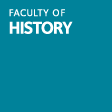Intellectual history is traditionally text-based. Sometimes regarded as synonymous with the history of ideas, its natural starting points are the texts in which ideas are expressed and the authors who write them. Many intellectual historians now also situate authors, texts, language, and ideas in economic, social, political, and cultural contexts; and the scope of the field is now broadening further to consider the role of material objects and practices in shaping intellectual activities (Grafton, 2006; Kelley, 2002; Whatmore & Young, 2016).
Data now offers a further opportunity to enrich the field. Digital technology affords intellectual historians the capacity to extract insight from previously unmanageable quantities of highly granular data. In a manner in some ways analogous to the focus on material culture, this capacity facilitates the writing of intellectual history from the ground up. Instead of beginning from canonical texts and working downward to explore their reception, historians can potentially situate individual texts and authors within shifting landscapes of intellectual activity, animated by huge bodies of digital data previously immobilized on the printed page.
This paper explores how one source of such data—university matriculation registers—can be used to map out one kind of intellectual exchange—student migration—at a scale and pace which makes visible for the first time patterns which structured the intellectual lives of hundreds of thousands of people across vast swathes Europe. More specifically, this paper examines the densest concentration of universities in early modern Europe at the most tumultuous moment in their history: Namely, the universities of the Holy Roman Empire in the midst of the Thirty Years’ War (16181648). After situating the topic on a broad geographical and chronological canvas (in Part I), this paper shows how even a relatively superficial engagement with this data can reveal how the war transformed the academic geography both of the Empire itself (in Part II) and of the huge catchment area which surrounded it (in Part III). After summarizing some basic historiographical and methodological results, the paper concludes (in Part IV) by examining the prospects for a more intensive engagement with this data.



